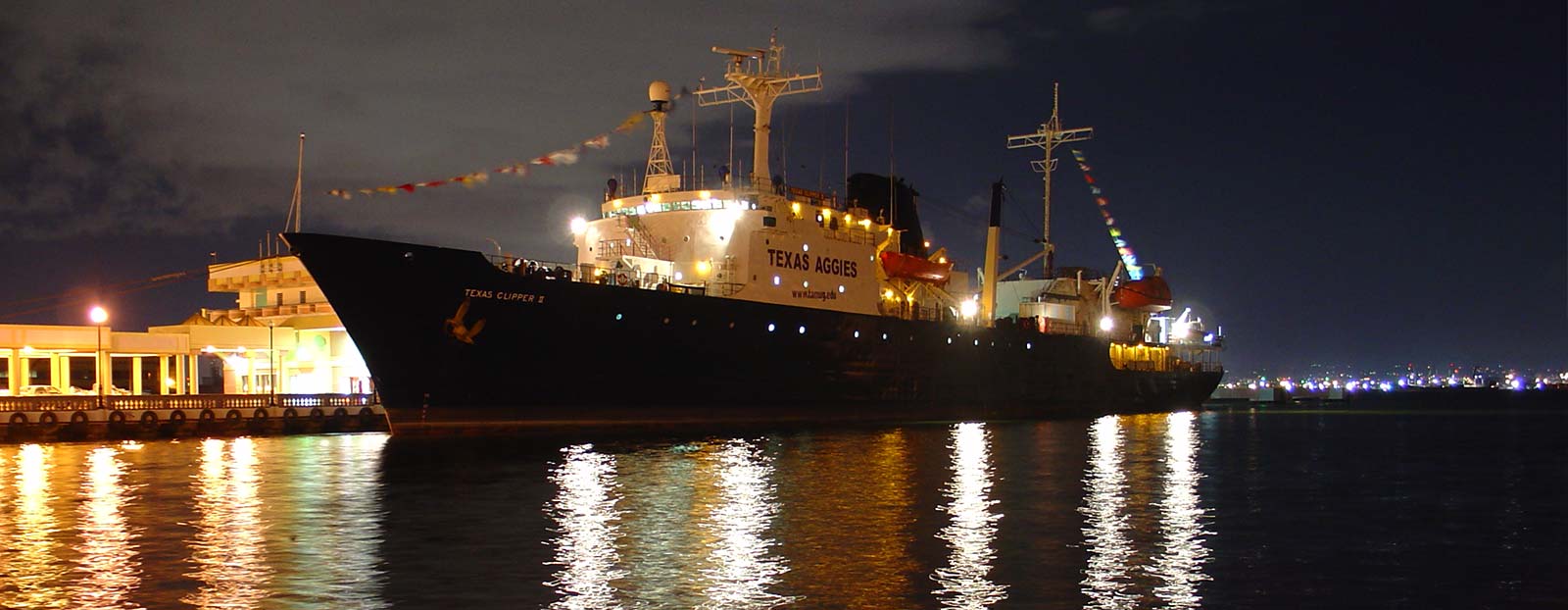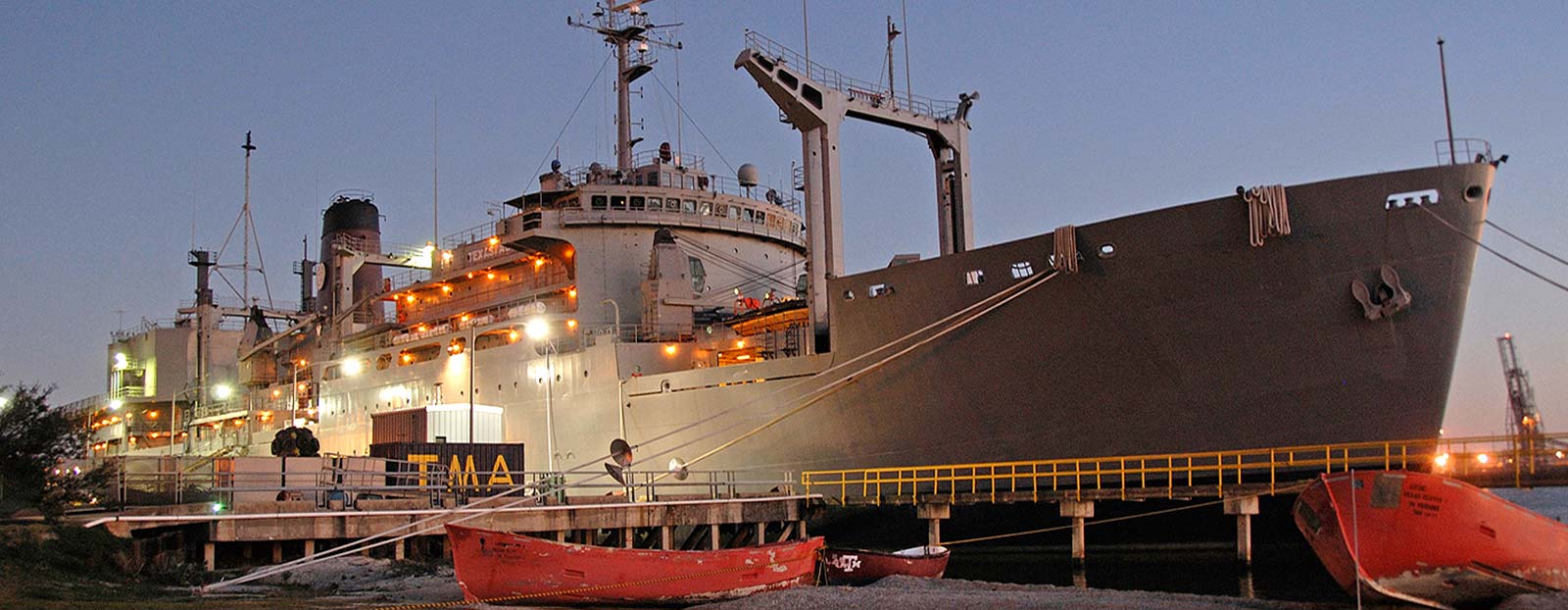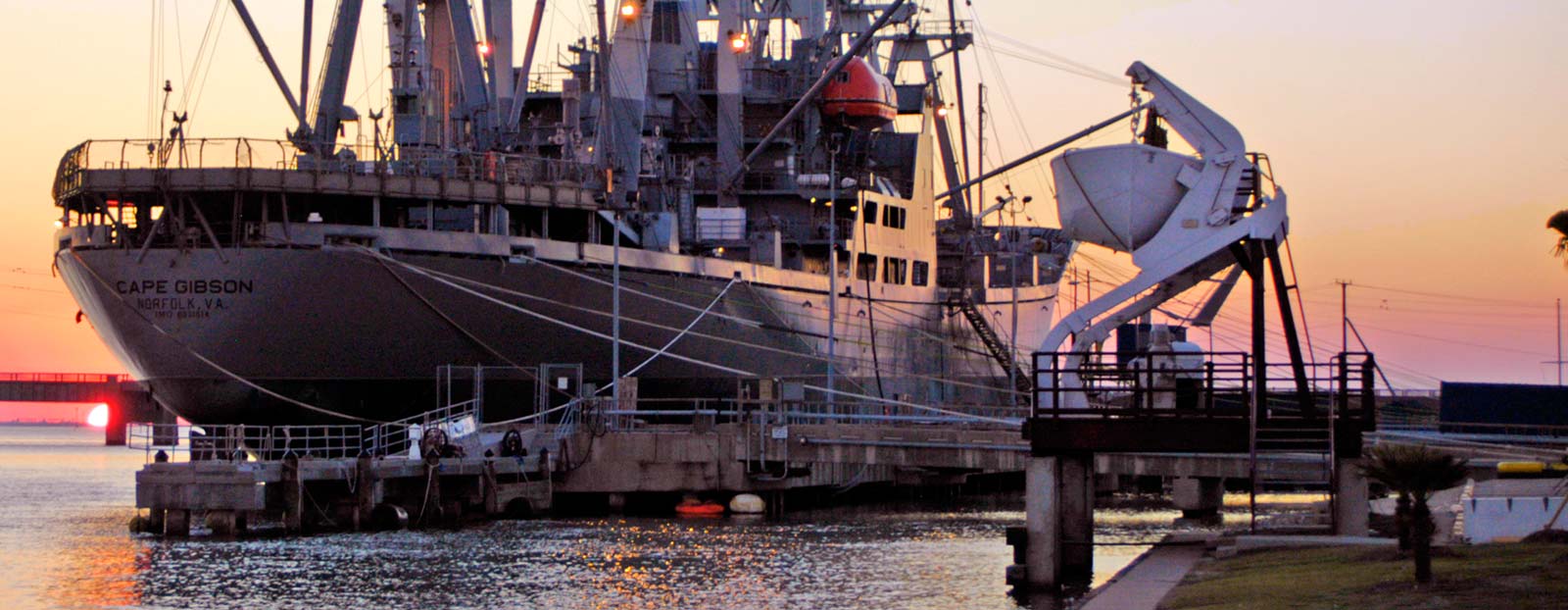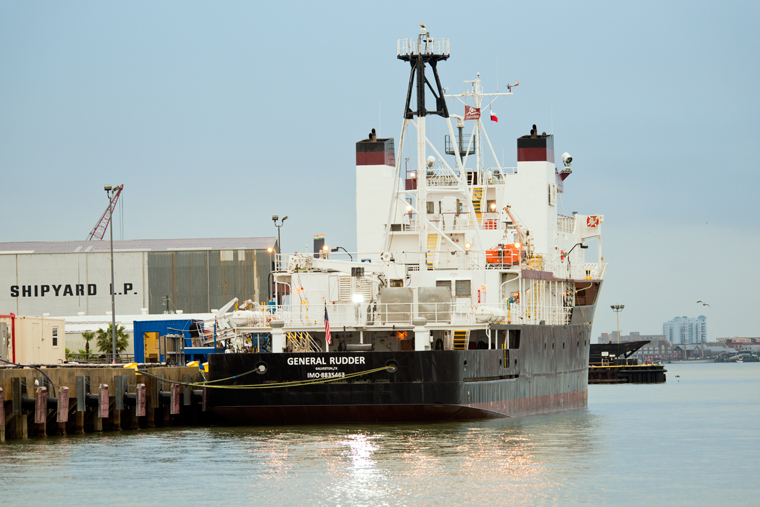History

Celebrating over fifty years, the Texas A&M University at Galveston serves as the “ocean oriented campus” of Texas A&M University. The campus offers a unique blend of marine and maritime programs, including majors in science, business, engineering, and transportation.
The atmosphere fostered by the faculty, staff, and students emphasizes the intimate relationship between the university and the sea.
 TAMUG is a branch campus of Texas A&M University. Graduates receive the Aggie Ring and a Texas A&M University diploma. The Texas A&M Galveston is home to the Texas A&M Maritime Academy: the only maritime academy located on the Gulf Coast.
TAMUG is a branch campus of Texas A&M University. Graduates receive the Aggie Ring and a Texas A&M University diploma. The Texas A&M Galveston is home to the Texas A&M Maritime Academy: the only maritime academy located on the Gulf Coast.
In the late 1950s two Galveston marine biologists, Dr. Albert Collier and Dr. Sammy Ray pioneered the Galveston Marine Laboratory, conducting scientific research in oceanography and marine 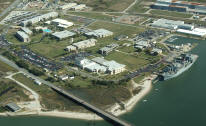 biology at the former Army barracks of Fort Crockett.
biology at the former Army barracks of Fort Crockett.
In 1965, the United States Department of Commerce, Maritime Administration provided a training ship for Texas Maritime Academy cadets. The the U.S. Navy ship, USS Queens, was renamed the Texas Clipper.
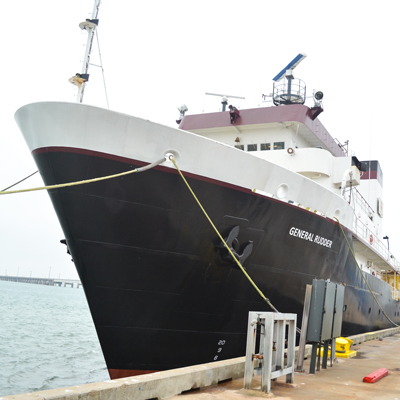 While training cadets to become officers in the Merchant Marine of the United States, TMA training vessels are operated by the State of Texas under the jurisdiction of MARAD and considered public vessels. Subsequent training ships replacing the Texas Clipper included the 393-foot USN Chauvenet, which was renamed TEXAS CLIPPER II. Then in 2005, the TEXAS CLIPPER II was replaced with the former USNS Sirius and later in 2009 with the former SS Cape Gibson.
While training cadets to become officers in the Merchant Marine of the United States, TMA training vessels are operated by the State of Texas under the jurisdiction of MARAD and considered public vessels. Subsequent training ships replacing the Texas Clipper included the 393-foot USN Chauvenet, which was renamed TEXAS CLIPPER II. Then in 2005, the TEXAS CLIPPER II was replaced with the former USNS Sirius and later in 2009 with the former SS Cape Gibson.
Today the TS General Rudder takes the cadets to sea. She was named in honor of General Earl Rudder, leader of the Army Rangers on D-Day at Normandy. Later as president of Texas A&M University, President Rudder was instrumental in the founding of the maritime academy.
TAMUG Timeline
|
1931 |
Statute passed by Texas state Legislature that “interested citizens” could establish “in one of the harbors of the State of Texas a Nautical School…” |
|
1952 |
The Marine Laboratory established. |
|
1957 |
Marine Laboratory of the oceanography department of Texas A&M College authorized to move to a surplus building on Fort Crockett. |
|
1958 |
Annual banquet held in Galveston to celebrate National Maritime Day. Committee established to help create a state maritime academy. |
|
1959 |
Committee confronted with first major challenge: a 28-year-old legislative obstacle to creating a maritime school in Texas. |
|
1961 |
State funds for the Texas Maritime Academy appropriated. |
|
1962 |
The Texas Maritime Academy cadets started their first semester ever. |
|
1963 |
The dedication of Fort Crockett campus postponed because of the assassination of President Kennedy. |
|
1964 |
Fort Crockett campus dedicated. |
|
1965 |
Cadets took first cruise aboard the renamed Texas Clipper. George Mitchell donated 100 acres on Pelican Island. |
|
1966 |
Cadet Charter class graduates. Texas A&M named a Sea Grant institution. |
|
1970 |
The first structure on the new Pelican Island campus—a docking facility—to be completed. |
|
1971 |
Everyone moved to Pelican Island and for the first time, freshmen (and sometimes sophomores) didn’t have to stay at the main campus. |
|
1975 |
The Texas Coordinating Board approved a new bachelor of science program in marine biology. |
|
1976 |
The first dormitory building and the student union opened. |
|
1978 |
The first on-campus outdoor athletic facilities officially opened. |
|
1979 |
TAMU System Board of Regents renamed institution Texas A&M University at Galveston. The $2.4 million classroom laboratory building opened for classes. |
|
1982 |
Marine Fisheries was added to the campus curricula. |
|
1983 |
Hurricane Alicia caused half a million dollars in damage to TAMUG. |
|
1984 |
Propeller of a WWII seagoing tug installed on campus. |
|
1985 |
First commencement ceremony held in Galveston. |
|
1989 |
TAMUG in the US News & World Report top-ten rankings for small colleges in the West for the first time. |
|
1990 |
TAMUG began implementing its merger with the College of Geosciences at Texas A&M University. Enrollment breaks the 1,000 mark. |
|
1995 |
Anchor from Texas Clipper I was installed in the center of the quadrangle (to make way to the clock tower 8 years later. |
|
1996 |
The Texas Clipper II embarked on its maiden voyage. |
|
1997 |
First bachelor of arts program on campus approved. |
|
1999 |
TAMUG first appeared in the College Guide 2000 Princeton Review, of Time magazine’s top 500 colleges nationwide. |
|
2000 |
The bachelor of science degree in Ocean and Coastal Resources (OCRE) authorized. |
|
2002 |
TAMUG offers its first independent graduate degree. |
|
2003 |
Bracewell Clock Tower erected and dedicated. |
|
2005 |
Stephen Curley’s history of TAMUG Aggies by the Sea published. |
|
2007 |
Texas Clipper deliberately sunk off Port Isabel Texas as an artificial reef by Texas Parks & Wildlife. |
|
2008 |
Sept. 10, TAMUG campus closes for hurricane evacuation. Sept. 12 (Friday), Hurricane Ike hit Galveston directly: Approximately ¾ of Galveston was submerged. TAMUG relocated to College Station for remainder of fall semester, retaining more than 90 percent of its students. |
|
2009 |
Jan. 20, TAMUG classes resumed in Galveston. |
|
2011 |
The $42 million, 110,000 square-foot Ocean and Coastal Studies building opened. |
|
2012 |
TAMUG celebrated 50 years. |
|
2012 |
The General Rudder arrives. |
Traditions
One of the things Sea Aggies are known for—much like their land-locked counterparts in College Station—are their adherence and loyalty to Aggie traditions. Sea Aggies take part in all the time-honored Aggie traditions like Big Event, the Aggie Ring, Elephant Walk, Howdy, Muster and the 12th Man, but they also have their own traditions: Maritime Ball, The Anchor, SALT Camp, Texas Clipper Training vessel.
Celebrating 50 years of Sea Aggies
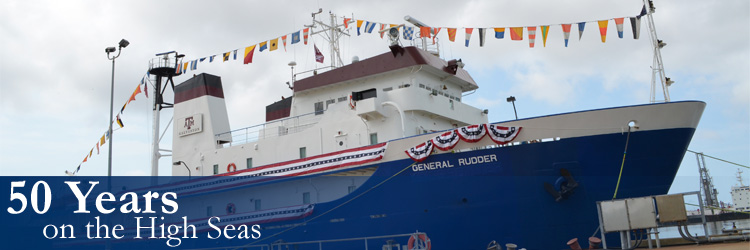
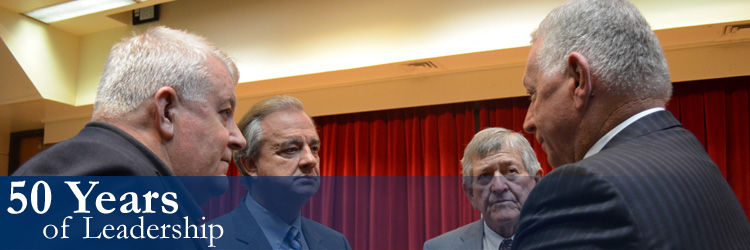
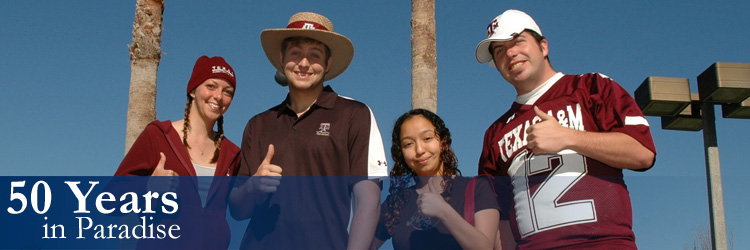
The university’s and maritime academy’s students, professors, scientific findings and the maritime academy’s merchant marine officers, naval officers and reputation continues to grow, passing regional, state and national boundaries. TAMUG professors tend to agree that in a short 50 years, the little university on the coast that no one thought would make it has been part of discoveries and people who have changed the world.
